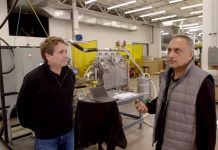When your computer goes on the fritz and has an unstable operating system environment, the best solution is to turn off the computer and then turn it back on again. How can this happen when the computer won’t respond to virtually any commands? Thanks to the Ctrl Alt Delete combination, it became possible for users to initiate a wide variety of computer or BIOS functions that included rebooting the computer.
This soft reboot was initially invented by David Bradley, who at the time was working as the chief engineer of IBM’s PC project. Bradley initially wanted to use the Escape key instead of the Delete key, but found it was too easy to accidentally initiate the command. Born in 1949, Bradley didn’t intend for this command to be used by end users. It was supposed to be for coders and programmers so they could reboot computers without powering down.
Most of Bradley’s career involved working at IBM. Here is a look at some of the other work for which he is known.
1. ROM BIOS Code
For the average end user, the amount of RAM a computer has is an important consideration of the buying process. This memory allows for better speed, faster processing power, and more multitasking components for a computer. The higher the amount of RAM, the better the computer happens to be, right? In the early days of personal computing, another type of memory, read only memory [ROM], was also part of the spec list. The code that Bradley developed helped the BIOS, which is software that the PC uses to run and check hardware settings, be able to have enough memory to function properly. The software is actually stored on the ROM chip that is affixed to the motherboard.
2. Language Programming Advancements
How does your computer actually operate? You can get just a glimpse of the coding that powers a computer by opening up a web browser to see the commands that are used on any given website. Programming a computer comes through a complicated language of similar commands and the way it is assembled through programming is often different than programming from an end user standpoint. Bradley helped to advance the language of programming in regards to IBM computers and his book on the subject has been released in several different languages.
3. Input/Output Systems
One of the first all-in-one computers that was available to the general public in a fairly affordable way was the System/23 Datamaster. Often better known as the IBM 5322, this computer had a text-mode display and came with a keyboard, processor, its memory, and two floppy disk drives all in the same cabinet. It could be installed without a specialist and had 256k of memory, which was massive at the time. Introduced in 1981, it came out just one month before the first IBM PC. Bradley helped to develop the input/output [I/O] systems for this computer.
Much of Bradley’s work can still be seen today in every computer because it is the foundation upon which much advancement have been made. Holding 7 patents, it is safe to say that David Bradley has greatly influenced how modern computing happens.
Strong proponent of individual liberty and free speech. My goal is to present information that expands our awareness of crucial issues and exposes the manufactured illusion of freedom that we are sold in America. Question everything because nothing is what it seems.




















